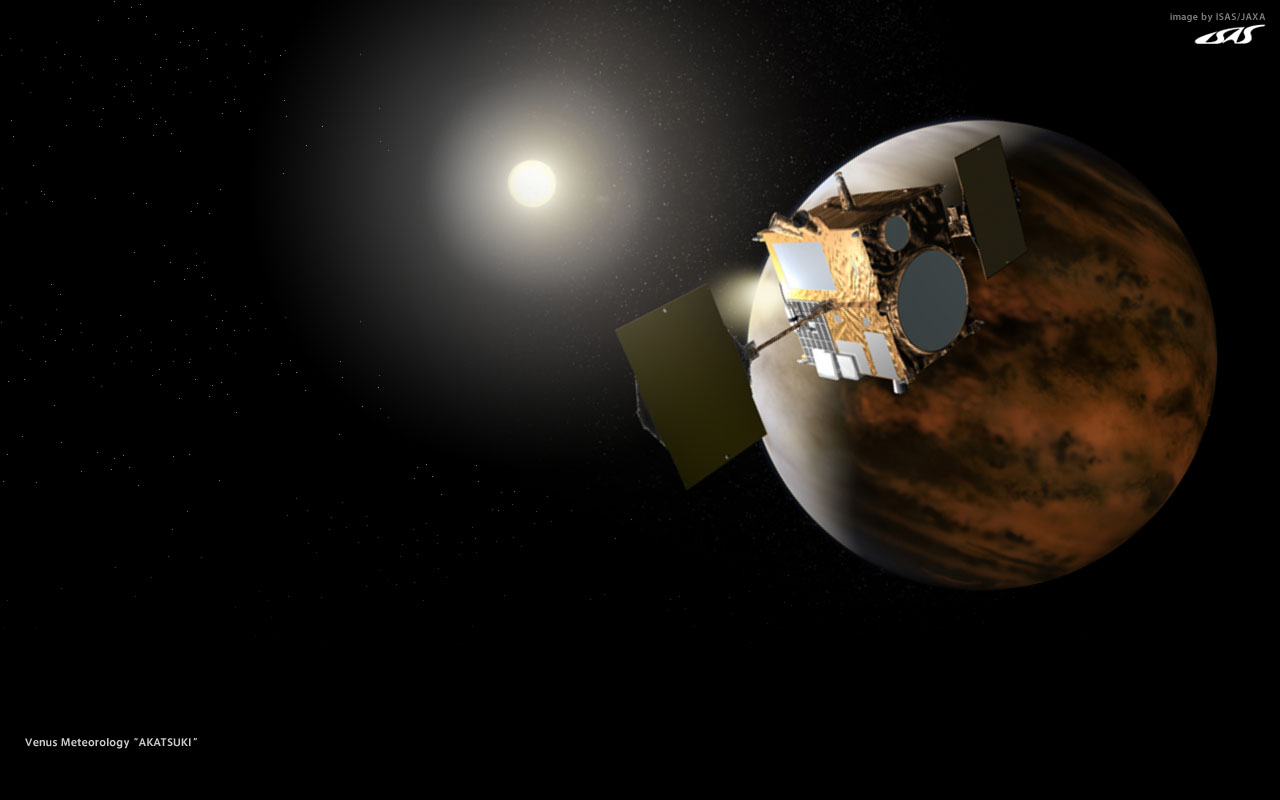The Japanese probe successfully entered the orbit of Venus 5 years after the first failure

The fact that the Japanese five years ago sent their own probe to Venus, heard not so many people. But today, many will hear about this device - after all, “Akatsuki”, the name of the Venus orbital probe, successfully entered the orbit of Venus. And this is despite the fact that the main engine failed five years ago, all operations were carried out by Japanese scientists using shunting engines.
With the help of four shunting engines that were turned on for 20 minutes and 30 seconds, the Japanese scientists were able to slow down the probe, which allowed it to be put into the orbit of Venus. The engineers who designed the probe engine system did not even anticipate that the shunting engines would be included for such a long time. Nevertheless, they successfully passed the test, and now the designers of the device can be satisfied - everything went well.
This is not the first attempt to reach the orbit of Venus. The beginning of the maneuver to go into orbit was scheduled for 23:49:00 on December 6, 2010 UTC. The maneuver was started on time, after which the connection with the device disappeared for an hour. Some sources argued that the temporary loss of communication was planned because it caused the planet’s shadow, but the break lasted much longer than the estimated 20 minutes. After the connection was restored, the device was found to be in safe mode and stabilized by rotation 1 turn in 10 minutes. Due to the low speed in the communication channel using an omnidirectional antenna, details about the state of the device were not immediately available. The main antenna at that moment could not be used due to its possible malfunction. On December 8, 2010, JAXA reported that the maneuver of going into orbit ended in failure.
')
True, the actual orbit is very different from the calculated one - the time it takes to orbit Venus takes 15 days, rather than 30 hours, from Akatsuki. But the software of the device has already been changed to work in the current mode, so the scientific mission will not actually suffer. Before specialists can conduct an accurate assessment of the current orbit, it will take several more days, but it is already clear that the device will be able to work normally.
The total mass of the spacecraft is 640 kg, of which 320 kg is fuel and 34 kg is scientific equipment. The main part of the device is a box 1.04 x 1.45 x 1.4 m, equipped with two solar panels, the area of each of which is 1.4 m². Solar panels will produce about 500 watts of electricity in Venus’s orbit by the end of their life.
“The probe is in good condition. Now we are evaluating and calculating the orbit after conducting operations with shunting engines. It may take several days to get all the data, after which we will report it officially, ”said a representative of the team of the Venusian satellite.
The probe orbit is elongated, and quite strong. The minimum distance to Venus will be only 1000 kilometers.
Estimated satellite operation time is 2 years. At the same time, it is possible to extend the operating time of the probe. It all depends on how much fuel is left in the vehicle’s tanks. So far, you can not give an accurate forecast.
The satellite will study the climatic and weather conditions of Venus. To do this, "Akatsuki" is equipped with 5 cameras, with which scientists can study the movement of clouds and the movement of air flow. In addition, the mapping of the surface of Venus is planned, with the simultaneous goal of detecting active volcanoes. Thick cloud cover does not allow to see the surface of the planet, but the infrared camera will help to solve this problem. The UV camera will track sulfur dioxide. After a series of observations and the receipt of relevant information by scientists, scientists may be able to build a three-dimensional model of the atmosphere and cloud cover.
Source: https://habr.com/ru/post/367263/
All Articles